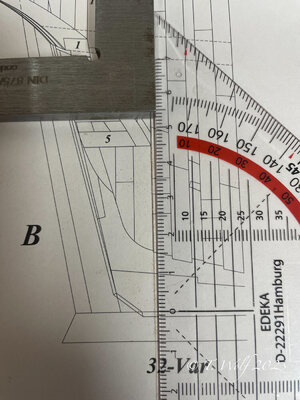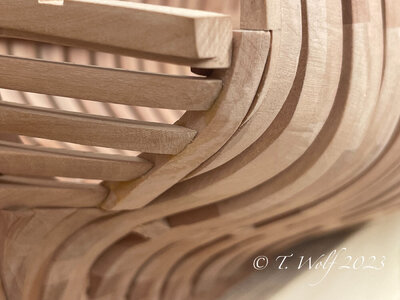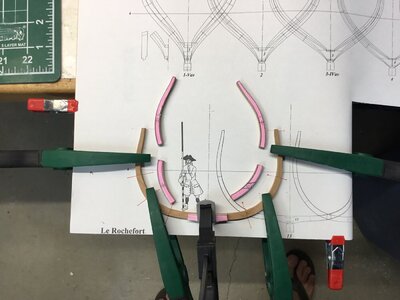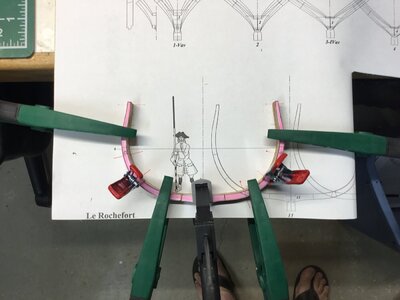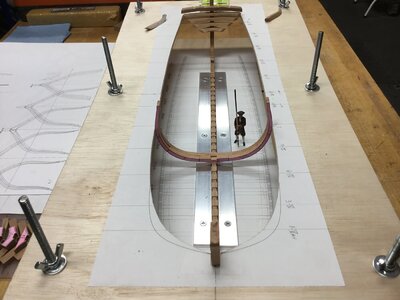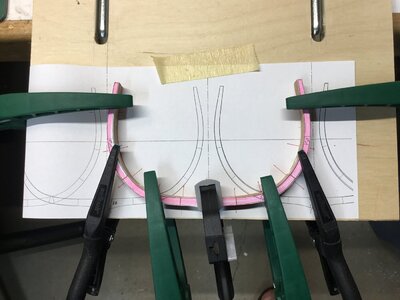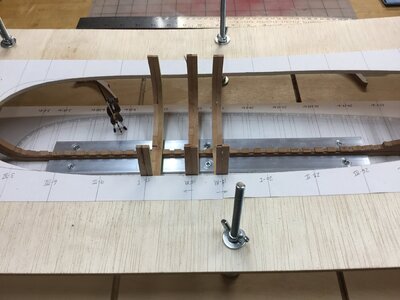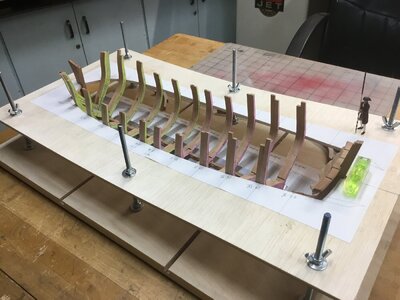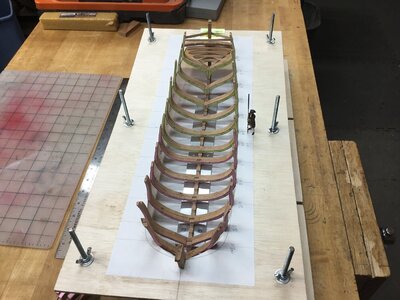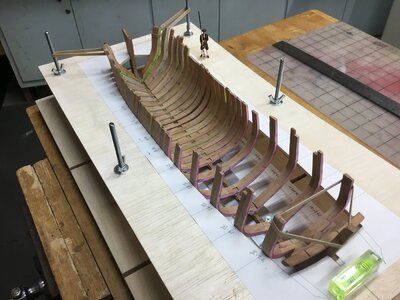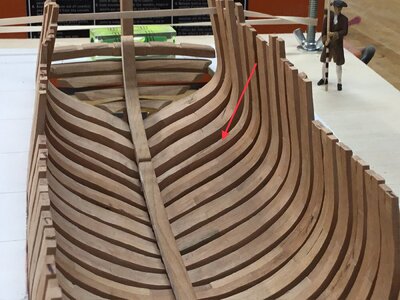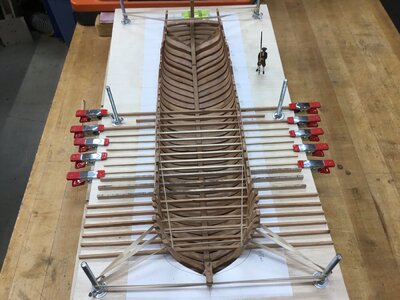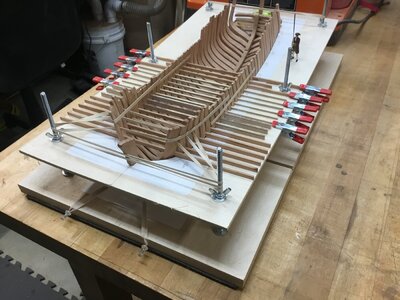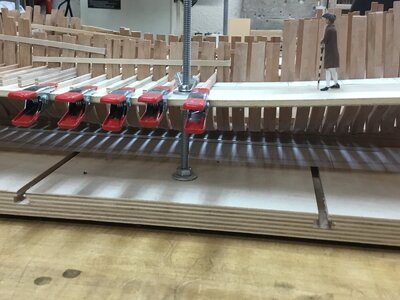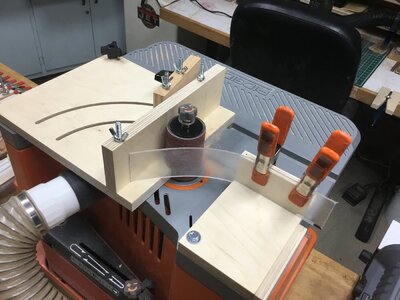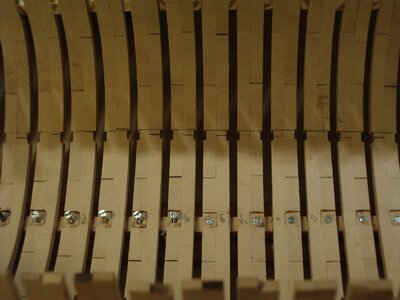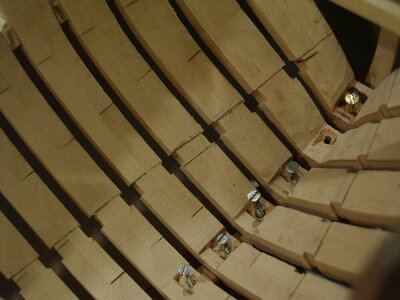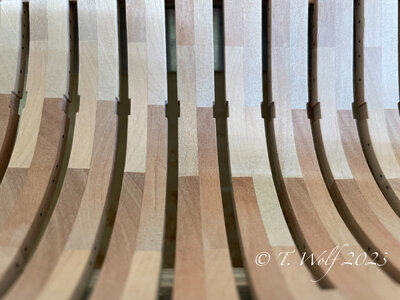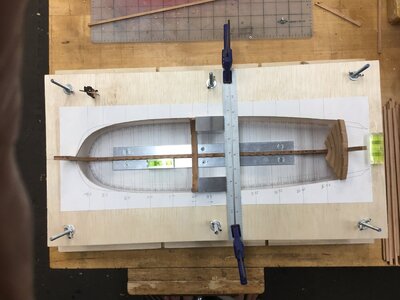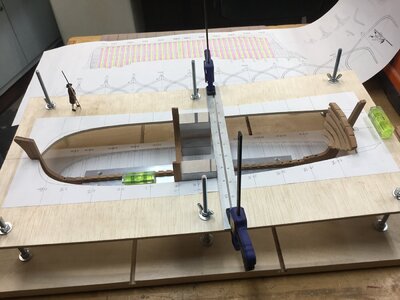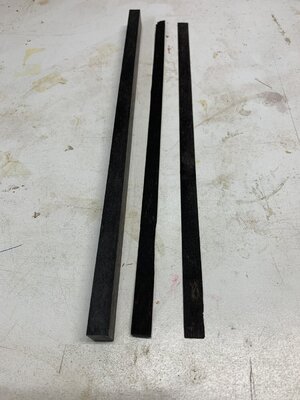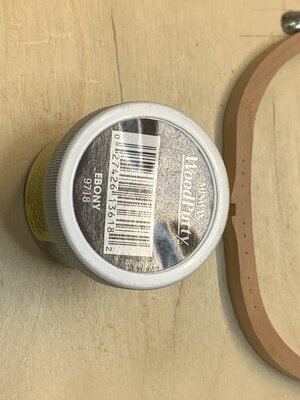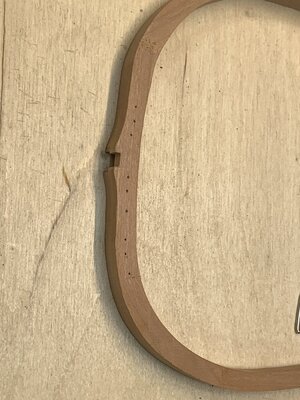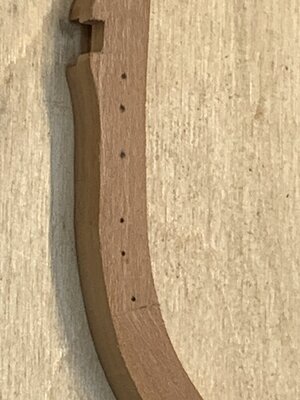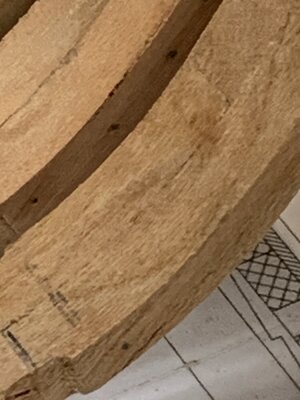Hello Oliver, first of all very nice progress and secondly sorry that I didn't answer right away. What is important is that they are aligned in the water and the distance is the same everywhere (between 2,3,4 and 5). I put equal sized spacers in between. This is not the case with the transom 1 because it is curved. The fashion piece looks more difficult than it is, I only made and fitted it at the very end. In other words, all frames are installed, then the rear is assembled and then the fashion piece is inserted. The fashion item is labeled 9 and the plan view is labeled T and B. I'm going to do an illustrated guide this week because it's really difficult to explain.
